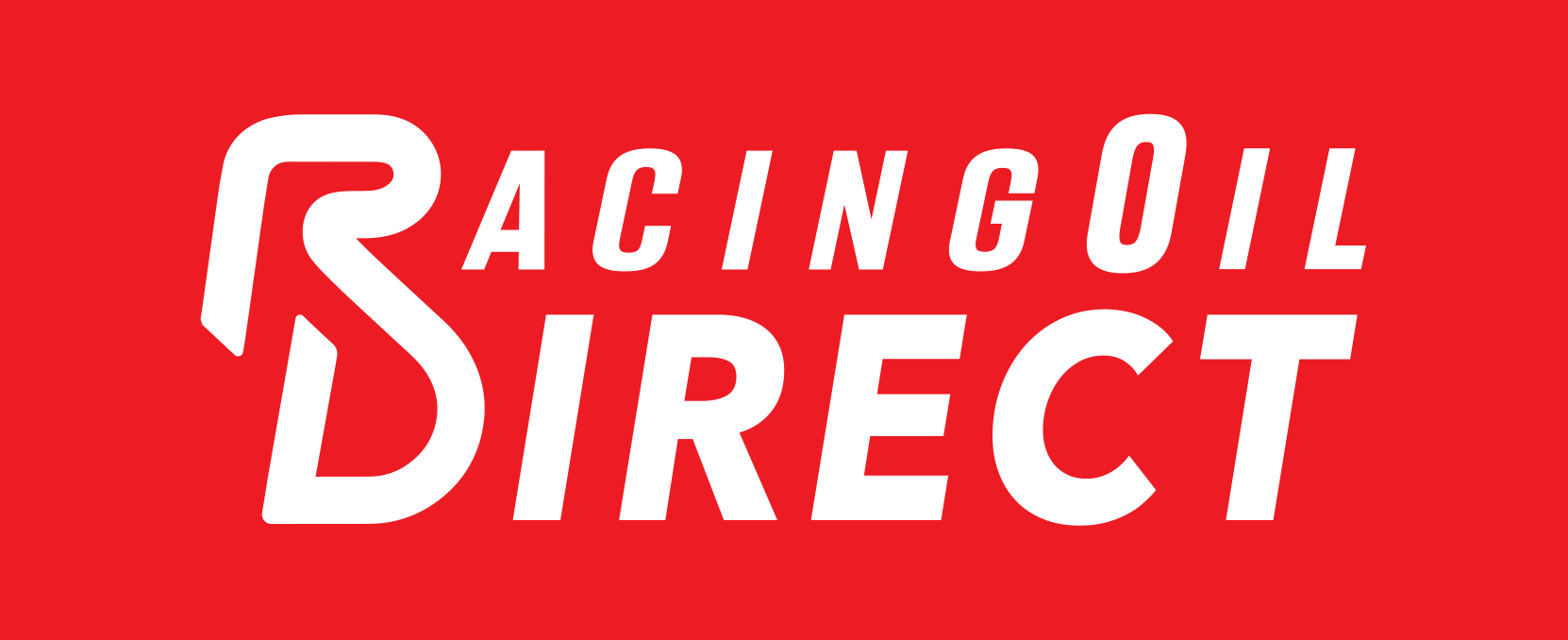Any engine is only as good as the oil that it runs on. It’s that simple. Modern engines are incredibly complex. There are many layers to engine design. Modern precision engineering has allowed car manufacturers to reduce component tolerances to a level where there’s very little room for error.
Modern engines require very specific, high-quality lubricants to reach their full potential. Motul 8100 series of engine oils represent a range that meets these strict requirements with a rather universal formula. The 8100 series truly is the Swiss army knife of motor oils, and we’re about to explain why.
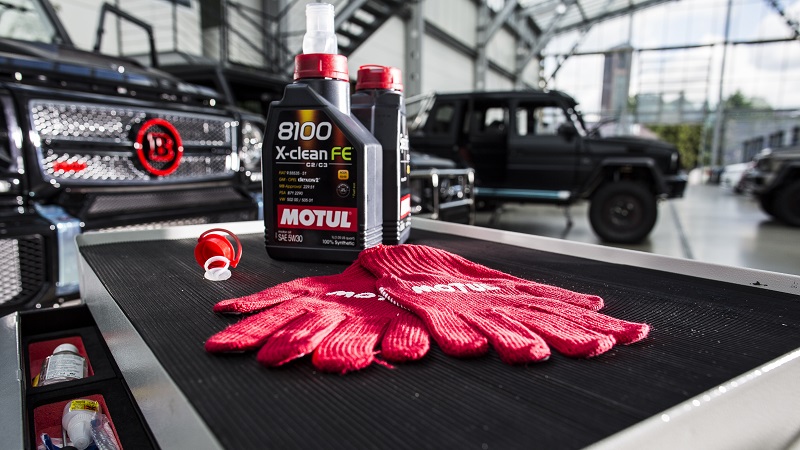
THE MOTUL 8100 UMBRELLA
Satisfying the world’s leading car manufacturers and their lubrication requirements is a tall order. Yet, the 8100 family of engine oils does exactly that. These oils are 100% fully synthetic Group 4 and Group 5 lubricants that cater to different performance profiles depending on what you drive, and how you drive it. All of the 8100 oils use a quality base stock that meets and generally exceeds OE specs.
Some 8100 series oils are ester-based, like the high-performance Motul 300V series, while others feature a PAO (Poly-Alpha-Olefins) base stock with its various synthetic formulations. Using a high-quality base stock formula sets the foundation for everything else. The idea behind the 8100 series, aside from offering a universal answer to niche car manufacturer requirements, is to give drivers plenty of flexibility.
As a result, there are oils in the 8100 family designed for economy, some that are formulated to offer maximum protection, handle powerful engines, and more. Furthermore, every version of Motul 8100 comes in a range of viscosity grades. That way you can find a lubricant that meets the requirements set by your car’s manufacturer, but also the current state of your engine.
LOW FRICTION AND WEAR PROTECTION
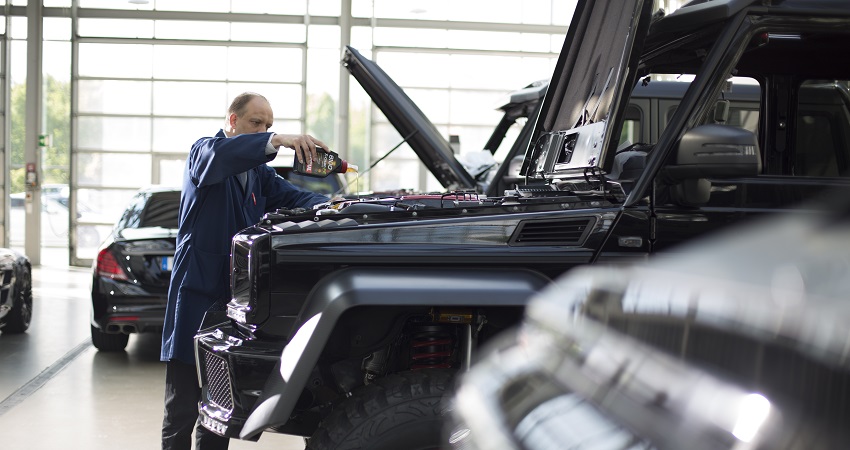
Before we get to specific 8100 variants, let’s briefly discuss the advantages of Group 4 and Group 5 synthetic oils. Mineral oils of old were an efficient solution for the challenges car manufacturers faced at the time. Older engines benefit from Group 1 and Group 2 lubricants solely based on how these oils behave. However, modern engines are a whole different beast.
Within the last several decades, engines have become more efficient both in terms of power output and fuel economy. The ability to machine engine components with tight tolerances meant that higher internal temperatures are much more common. Mineral oils simply weren’t up to the task of handling these new requirements, hence why a new solution was necessary.
Group 4 PAO and Group 5 ester-based oils are built to withstand high temperatures for long periods of time without losing stability. Oils from these two groups are better suited to handle extreme operating conditions, which are a normal occurrence in high-performance engines, but also regular modern engines.
PAO or Poly-Alpha-Olefins are immensely more stable than mineral oils when exposed to aggressive temperature differentials. This makes them perfect for environments where it gets freezing cold, and your engine needs consistent cold start protection. On the other hand, ester-based oils are incredibly resistant to high heat, which is why they’re the base stock of choice for high-performance and motorsports applications.
An ester-based oil is also naturally attracted to metals resulting in a long-lasting protective film that blankets all of your engine internals. When you start the engine first thing in the morning, this protective film keeps friction at bay until you get positive oil pressure.
The Motul 8100 series of engine oils use a combination of PAO and ester based oils, depending on their intended application. Here’s a quick rundown of 8100 oils and what they are optimized for.
Motul 8100 ECO-nergy
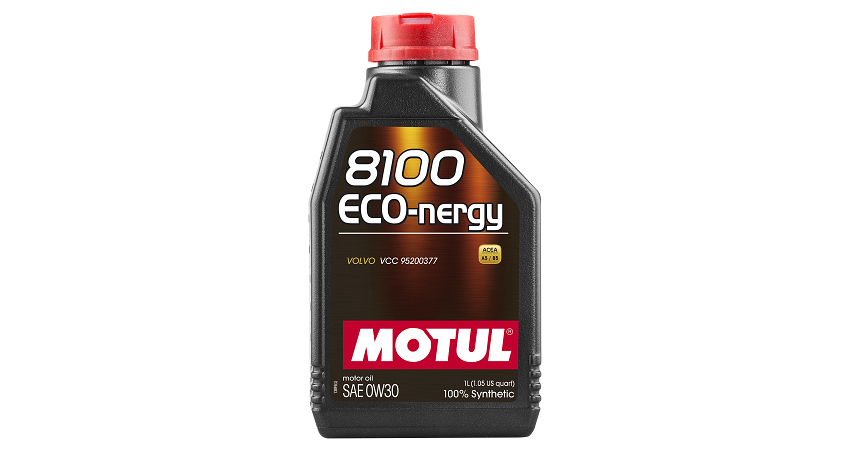
Motul 8100 ECO-nergy is a fully synthetic oil designed to deliver optimal fuel economy and engine protection. This blend features low HTHS, or High Temperature, High Shear rating, meaning that it’s optimized for extended oil change intervals. It also features full SAPS, or Sulfated Ash, Phosphorus, and Sulfur content. SAPS help extend the life of the oil itself, although they aren’t combustible. With ECO-nergy, a small amount of SAPS ends up in your cat or DPF.
The 8100 ECO-nergy is OEM approved by Ford, Jaguar Land Rover, Volvo, and Renault. It’s a solid blend that meets and exceeds car manufacturer requirements. This oil is available in two versions — Motul 8100 ECO-nergy 0W-30 and Motul 8100 ECO-nergy 5W-30 viscosity. Consult your car’s manual to find the right oil for your car!
Motul 8100 ECO-clean
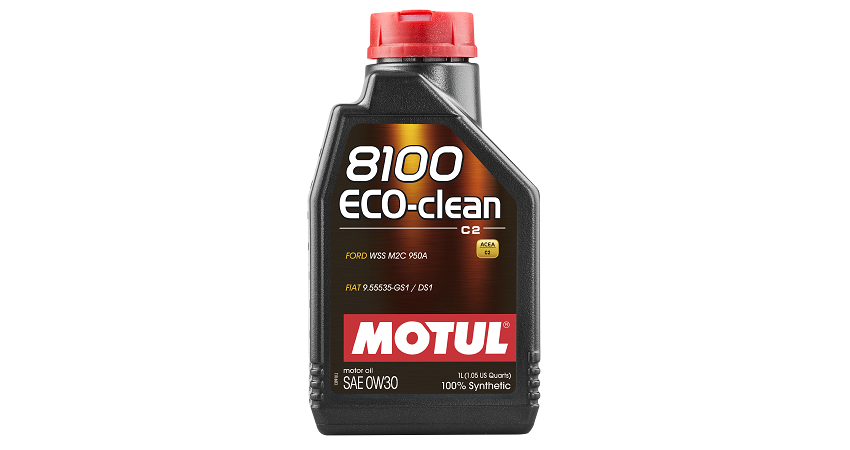
The 8100 ECO-clean is designed mainly for fuel economy, just like the ECO-nergy, but there’s one important difference between the two — ECO-clean is rated as mid-SAPS, meaning that it packs less sulfated ash, phosphorus, and sulfur.
By having a lower amount of SAPS, ECO-clean ensures a longer catalytic converter lifespan, while maintaining extended oil change intervals and good fuel economy.
Motul 8100 ECO-clean+
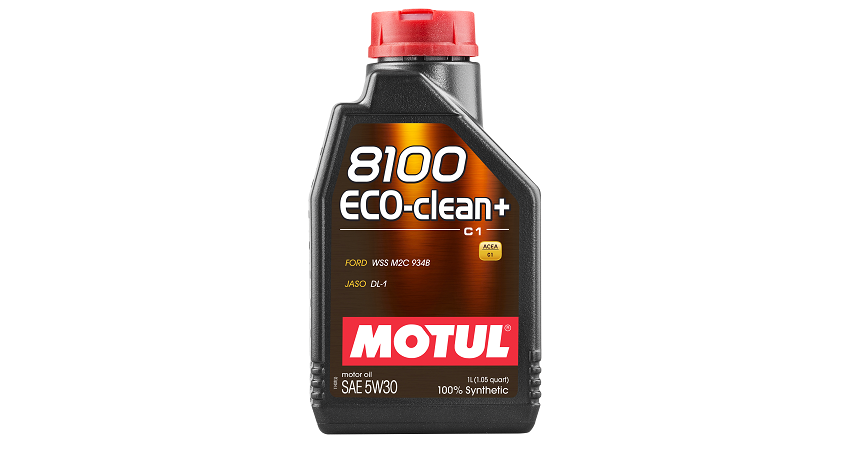
The 8100 ECO-clean+ is similar to the standard ECO-clean series in many areas. This oil is optimized for fuel economy and extended oil change intervals. However, it features low SAPS content and low HTHS. Approved by Ford, Jaguar, and Land Rover, this blend of 8100 is suitable for use in gasoline and diesel engines fitted with the latest DPFs and catalytic converters.
Motul 8100 ECO-lite
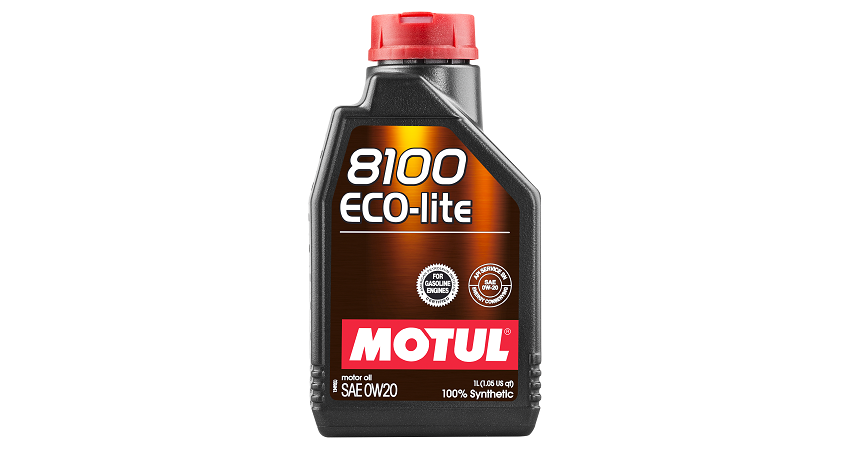
Motul 8100 ECO-lite oil is specifically designed to meet the requirements imposed by the latest API and ILSAC standards. The main purpose of ECO-lite series is to provide modern engines with an adequate level of protection, all while maximizing fuel economy. The latest generation of 8100 ECO-lite comes in a wide range of viscosity grades, including the following
By adhering to the latest standards, especially the API SP, Motul 8100 ECO-lite achieves efficient LSPI mitigation. Low-speed pre-ignition is an issue that occurs in modern direct fuel injected engines. LSPI can severely damage an engine if left unchecked. However, this problem can be solved through the use of adequate lubricants, like the Motul 8100 ECO-lite.
Motul 8100 X-cess
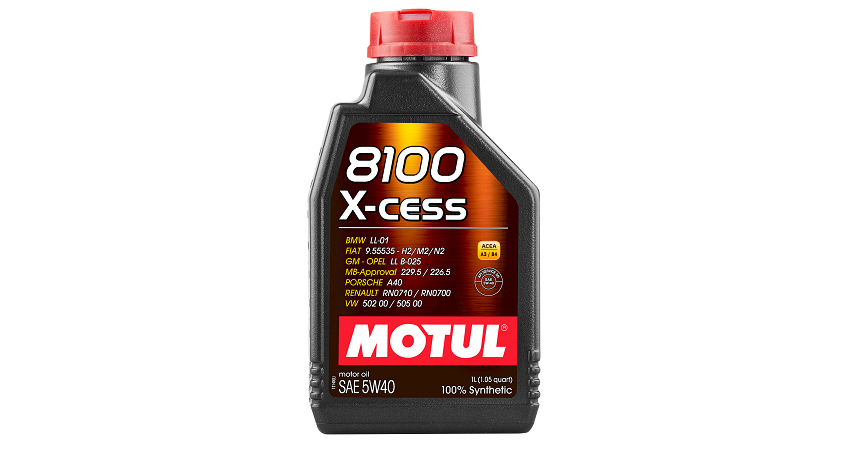
The 8100 X-cess range of oils is designed to meet the needs of powerful engines where high temperatures are a common occurrence. The X-cess formula features high HTHS and low volatility. This combo ensures optimal engine protection paired with low oil consumption.
Motul 8100 X-cess Gen 2 5W-40 the latest addition to this subgroup of lubricants. With the next generation of X-cess, we’ve met the new requirements imposed by BMW. Speaking of which, Motul 8100 X-cess is OEM approved by Mercedes-Benz, Porsche, VW, BMW, and Renault.
Motul 8100 X-clean
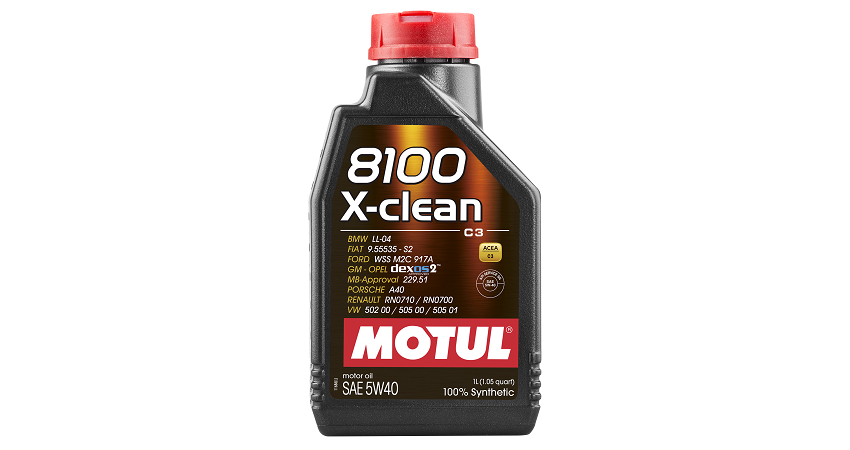
Much Like the X-cess line of lubricants, Motul 8100 X-clean 5W-40 is designed to meet the needs of modern engines. This is a high HTHS oil that features mid-SAPS, making it suitable for cars that have sensitive exhaust systems such as various Euro 6 rated Mercedes-Benz models.
The X-clean series of oils also brings stronger detergents, allowing this blend to provide good resistance to soot and other contaminants. X-clean is capable of producing a long-lasting, highly durable protective film, thus increasing protection against wear. This 8100 formula, as well as its new X-clean Gen 2 5W-40 version, is approved by GM, Mercedes-Benz, and Porsche, while it’s recommended for a variety of Asian vehicles.
Motul 8100 X-clean+ and X-clean EFE
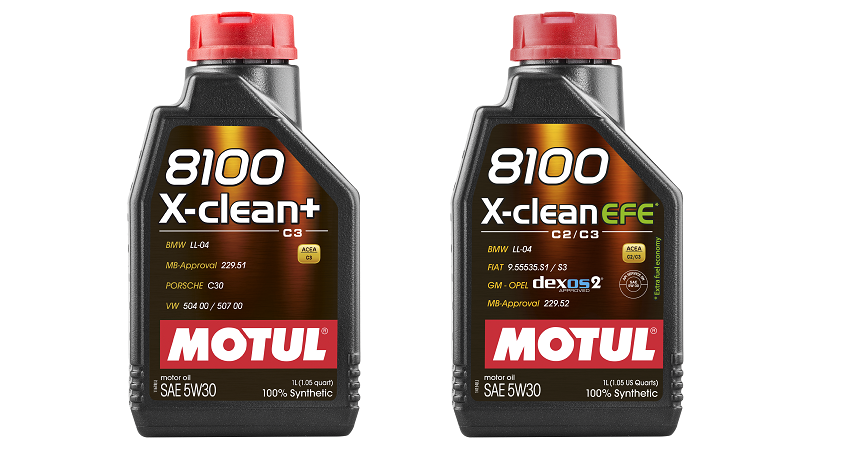
The Motul 8100 X-clean+ is optimized for the latest European car manufacturer requirements. This oil is aligned with BMW’s Long Life-04, MB-Approval 229.51, Porsche C30, and VW 504 00 – 507 00 standards. It’s a mid SAPS, high HTHS blend that ensures optimal protection and extended oil change intervals.
Similarly, Motul 8100 X-clean EFE was formulated to ensure an even better fuel economy (Extra Fuel Economy – EFE) than the original formula. It was also designed to work with modern catalytic converters as well as DPF filters fitted with Selective Catalyst Reduction.
Motul 8100 X-power
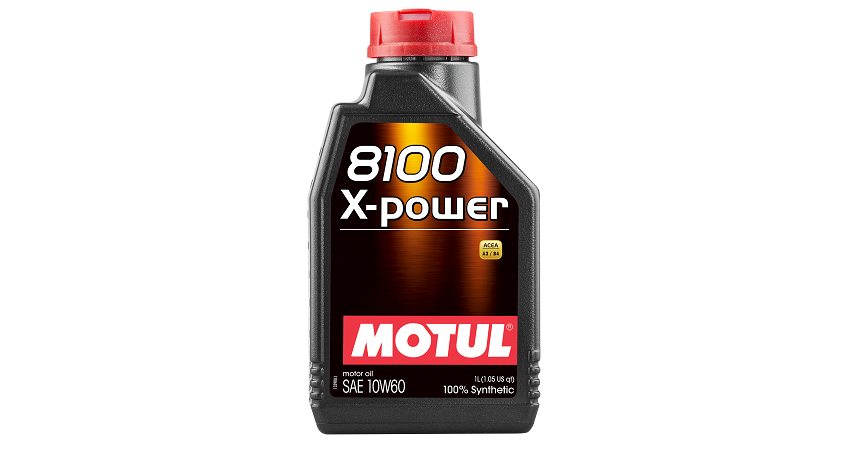
Next, we have Motul 8100 X-power. Formulated to meet the needs of high-performance gasoline engines, the X-power blend features high lubricating properties, incredible resistance against deposits, improved wear protection, and an outstanding temperature handling ability.
This is a 10W-60 grade oil. Being thicker, it is far more resistant to oil burn-off. If you’re looking for a premium high-performance oil for street use, this is it.
Motul 8100 X-max
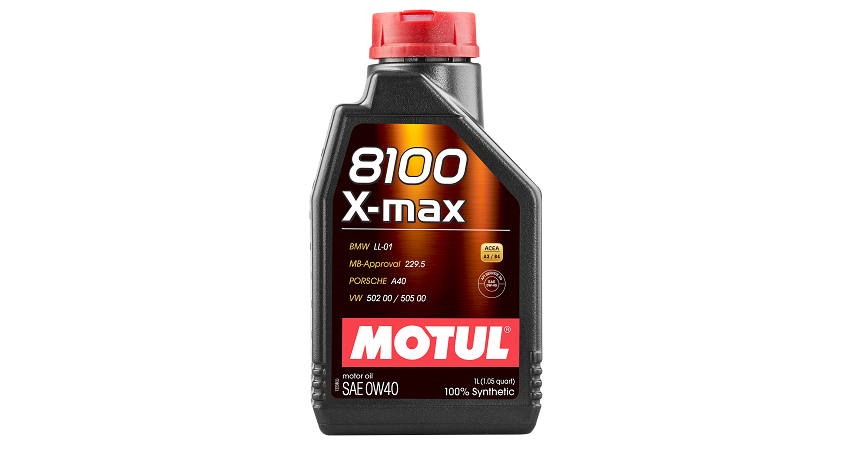
Last but not least, there’s the Motul 8100 X-max 0W-40. This is a lubricant designed to deliver a balance of fuel economy and increased protection to high displacement engines with higher power output. With full SAPS and high HTHS, X-max offers optimal protection and resistance to oxidation.
The 0W-40 viscosity grade adds to the protective nature of this blend by ensuring quick oil pressure buildup and good performance in cold weather conditions.
SELECTING THE RIGHT MOTUL 8100 OIL FOR YOUR CAR
Every member of the Motul 8100 family of oils brings its unique profile of benefits. There is plenty of overlap between different 8100 blends, as many of them share the same approvals and meet the same car manufacturer standards.
To figure out which one will match your car, the first thing you need to do is to ensure that the oil you’ve chosen meets the requirements found in your car’s user manual. Simply select the one that best fits your driving habits. That way you’ll get the best out of Motul oils, and your engine.
Article by Jason Cooper reposted from Motul Blog.
